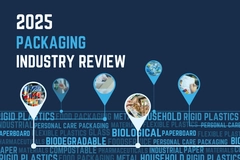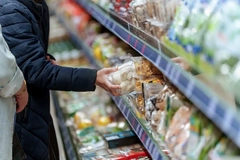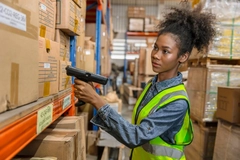European Bioplastics conference 2024 live: Earthfirst on merging sustainability with performance
As the European Bioplastics conference 2024 (EBC24) in Berlin, Germany, continues, Packaging Insights catches up with Jake Hebert, the global market manager at Earthfirst, a biodegradable packaging film producer.
The company has over 65 years of experience in engineering and manufacturing bio-based and compostable films for flexible packaging with production facilities in Columbus, US, and Ghent, Belgium.
At EBC24, Hebert is a speaker at the panel “Biobased Plastics: Championing performance and sustainability.” He will focus his insights on “The power of collaboration —- polylactic acid (PLA) compostable fruit and vegetables labels” alongside a TotalEnergies Corbion speaker.
Discussing how Earthfirst approaches the design of bioplastics to ensure they support a circular economy, he says: “As a PLA film manufacturer, we utilize raw materials that have a high degree of renewable carbon content that can also be composted at the end of use.”
Emerging opportunities and challenges
Hebert further tells us about the emerging trends he spots in bioplastics and compostable films, as well as about some of the common challenges and opportunities brands and manufacturers might face when transitioning from conventional materials to bioplastic.
“I am excited to see developments in the end-of-use scenarios for PLA packaging, including enzymes that can make PLA ambiently biodegradable and the scale-up of chemically recycling PLA back to lactic acid,” he says.
 Earthfirst’s compostable Clear Barrier Sealant (Image credit: Earthfirst).
Earthfirst’s compostable Clear Barrier Sealant (Image credit: Earthfirst).
Earthfirst highlights composting as playing a major role in the circular economy, pointing out that its biobased solutions are compostable. The process is particularly useful to ensure the circularity of food packaging, which can be difficult to recycle.
The Earthfirst Biopolymer Films are compostable barrier sealant films, including its Metallized Barrier Sealant, the Clear Barrier Sealant and the Soft Metallized Barrier Sealant.
“One challenge is ensuring that a new packaging material will work on existing production lines and ultimately meet the needs of a product,” Hebert continues.
“Making a packaging change requires thorough testing to ensure functionality through the supply chain and product life cycle. However, this also creates opportunities for companies to collaborate to address common challenges together.”
Hebert has worked with “numerous brands in their transition from conventional flexible packaging materials to sustainable alternatives, with a focus on maximizing renewable raw material content and ensuring a circular usage life cycle.”












